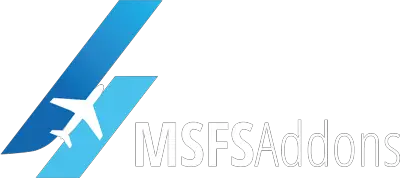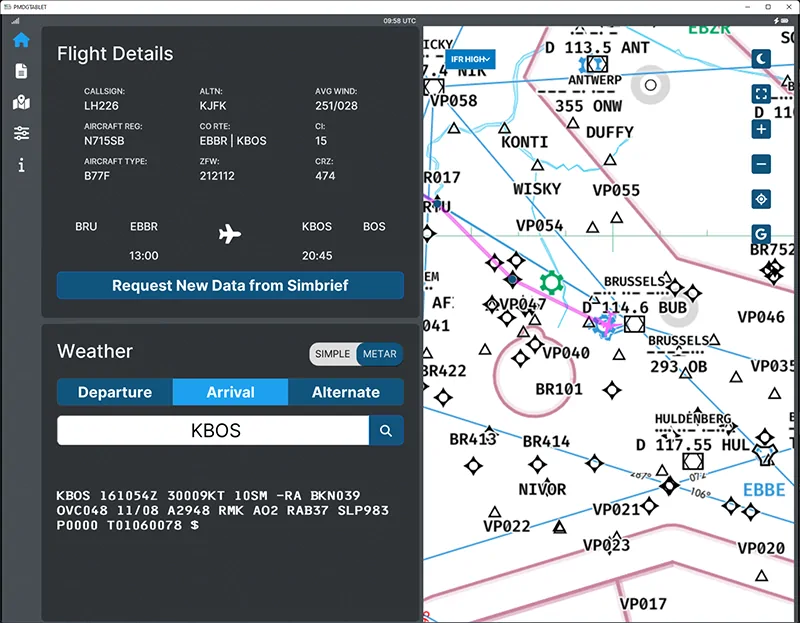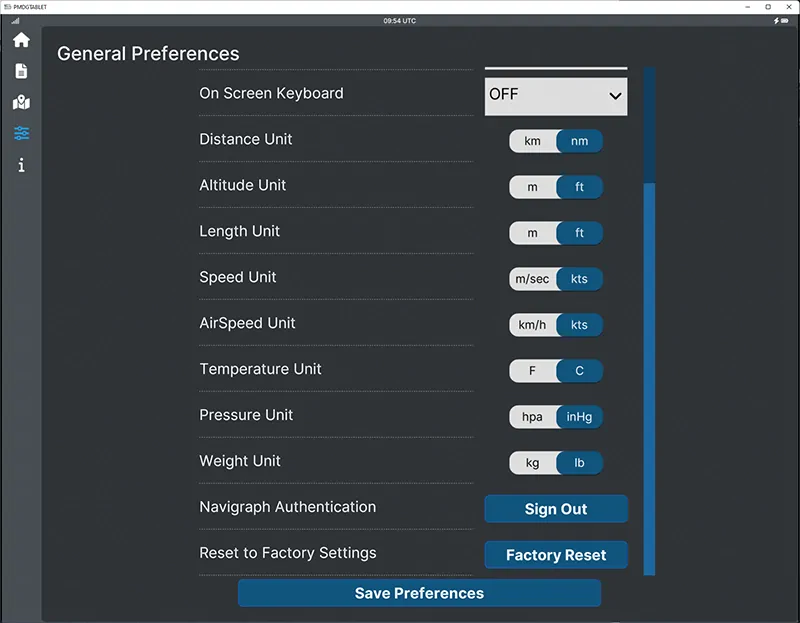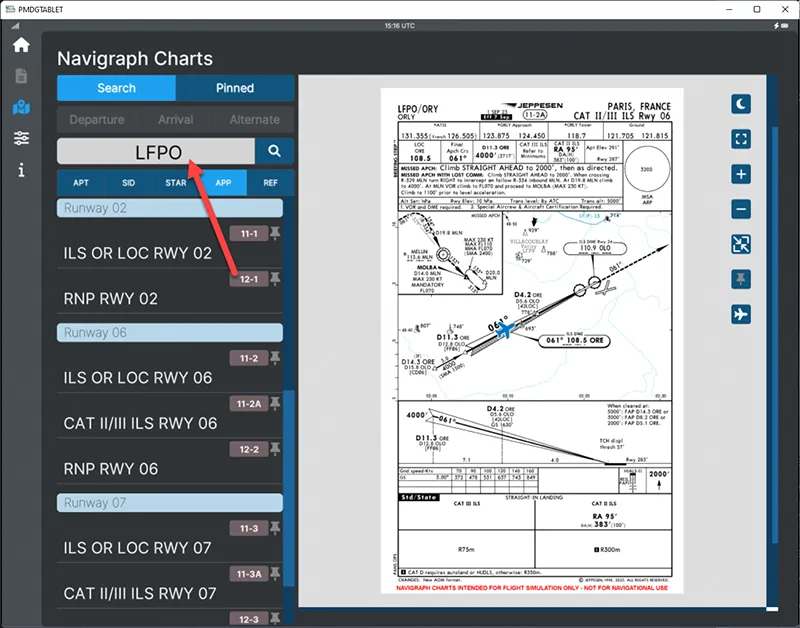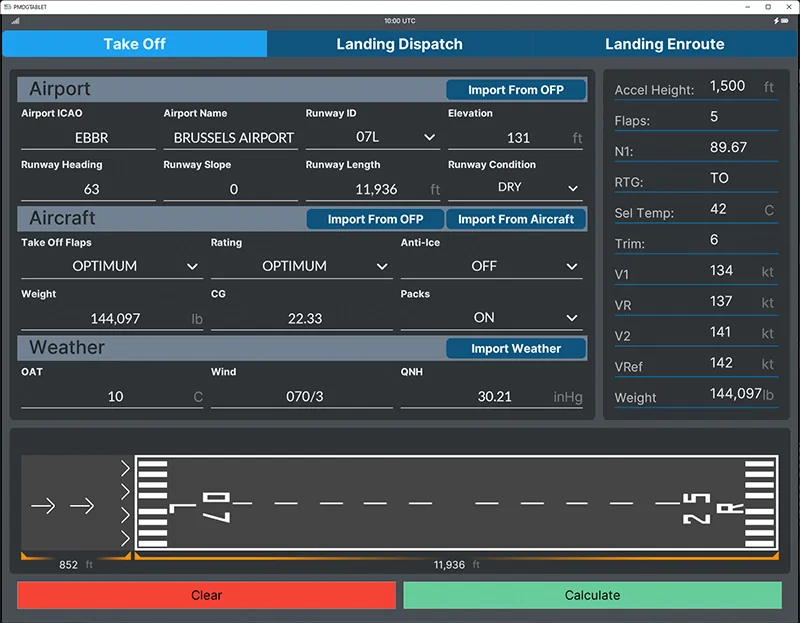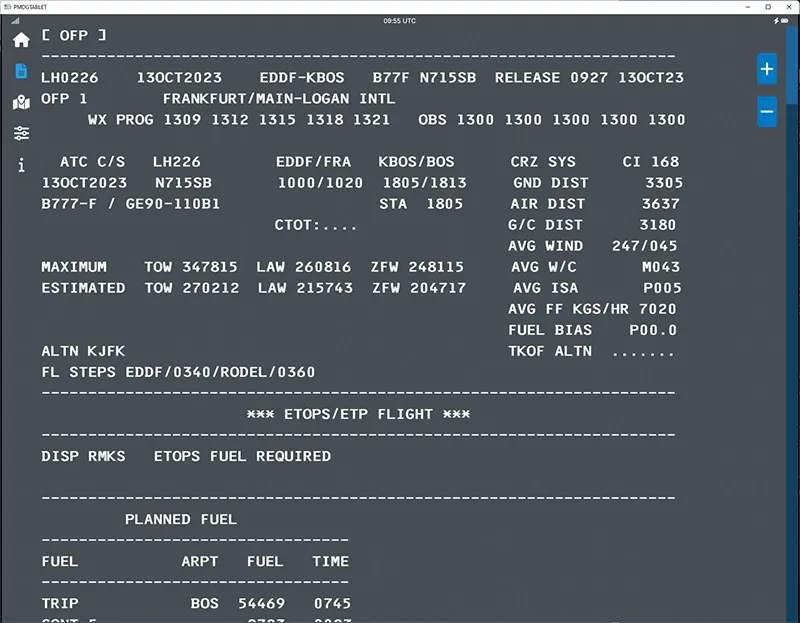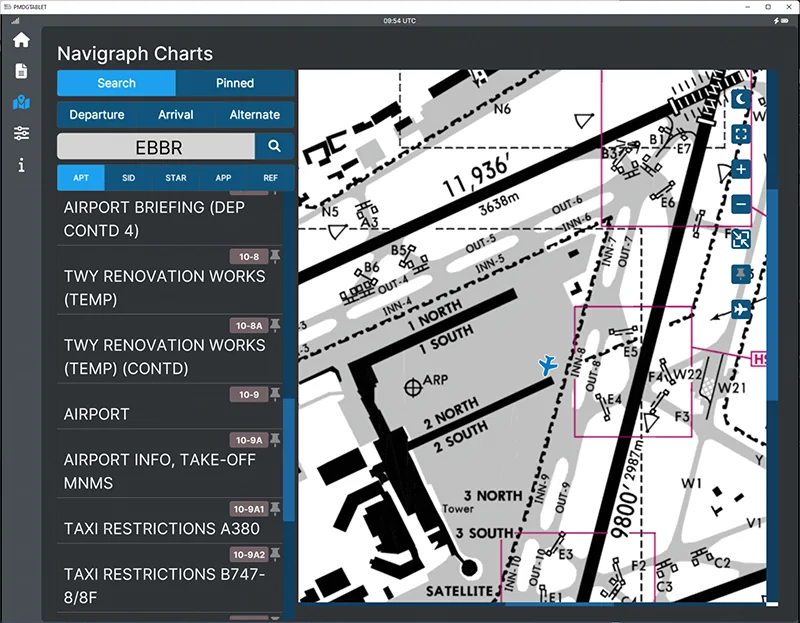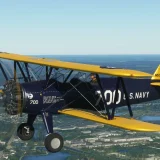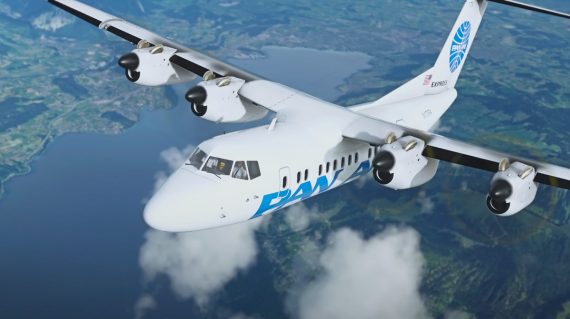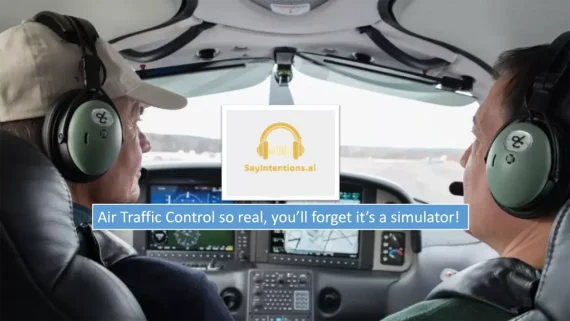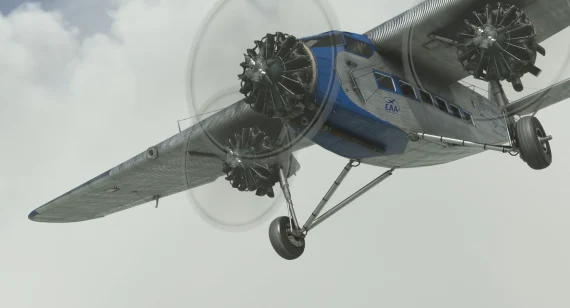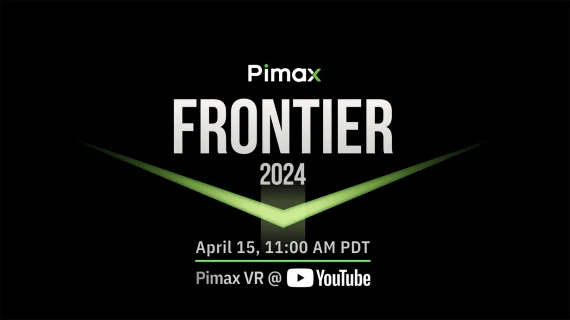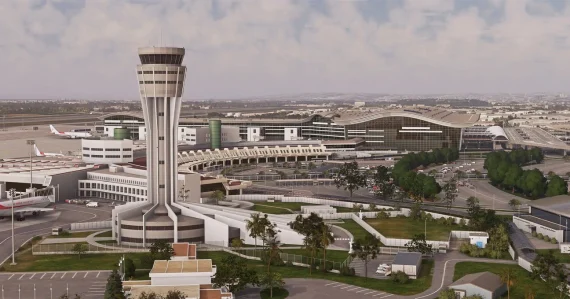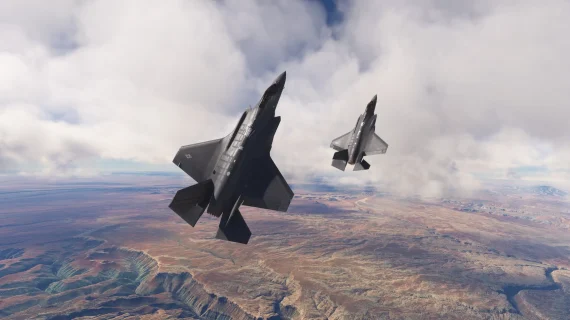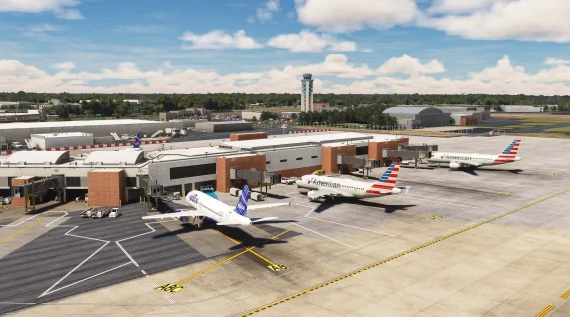At long last, here’s all you need to know about the PMDG EFB: features, images, and release date
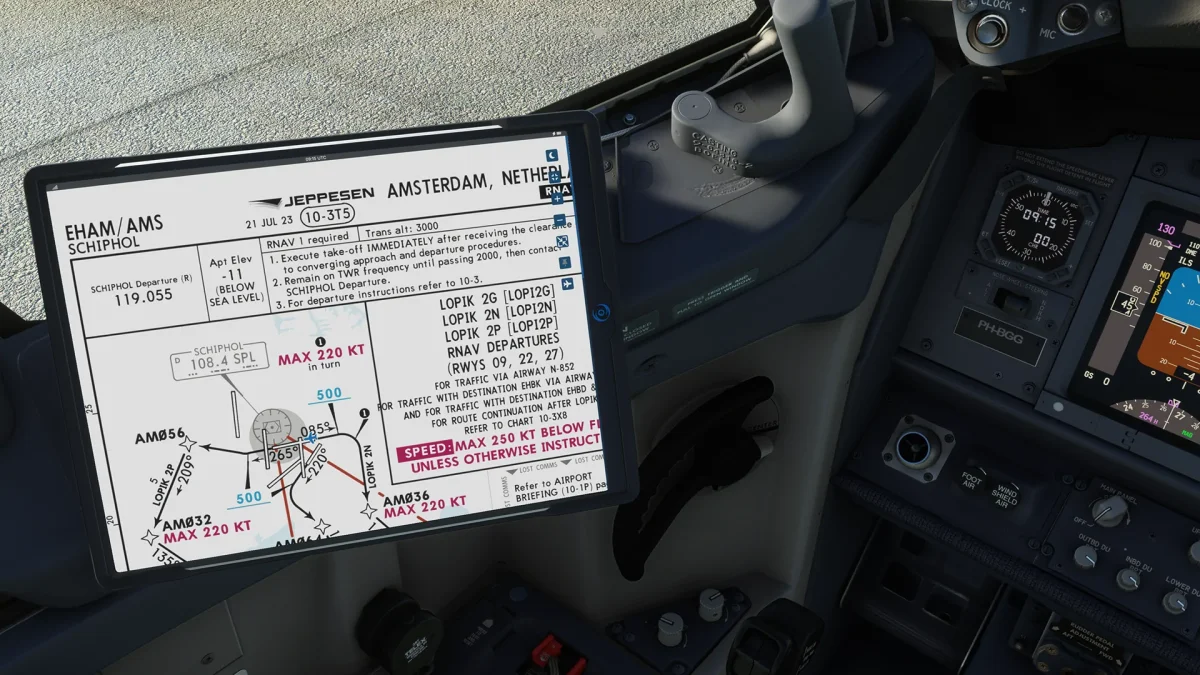
PMDG has finally unveiled this weekend all the details about its upcoming Universal Flight Tablet (UFT) poised to redefine the in-flight experience in its MSFS fleet. Starting with the 737NG Series, PMDG’s UFT is at long last being released as a free update sometime around October 30.
In a long statement on PMDG’s forums, Robert Randazzo told the story of this much-discussed feature for the company product line for MSFS. He started by explaining that, in PMDG’s view, the UFT is not quite like a conventional EFB, which is heavily geared towards flight planning and management, but is rather intended at being a dynamic, open-ended platform designed to host a plethora of applications aimed at augmenting both aeronautical decision-making and the simulation experience for MSFS simmers.
The journey towards this milestone began with a reassessment of PMDG’s previous EFB implementations within their P3D line of products, spanning models like the 737NG, 777, and 747-8 between 2016 and 2022. Given the industry’s shift towards more flexible, tablet-like devices for flight planning tools, PMDG decided to revamp the EFB originally destined for the PMDG 737 for MSFS, replacing it with a more interactive and adaptable UFT.
Initially, PMDG envisaged a straightforward transition, expecting the process to span a mere couple of months since the embedded functionality was already in place. The task seemed to be a simple reformatting on screen. However, the reality proved to be far more complex. The aspiration to create an ‘intelligent device’, a garden of numerous applications extending across the entire fleet of PMDG airplanes for MSFS, posed a series of technical hurdles.
The envisioned UFT would host a variety of applications, resembling a garden where different applications could be planted, each adding a new capability or feature for simming adventures. The UFT was conceived to mirror real-world applications used in complex jet operations, while also managing the simming experience in a context-sensitive and intuitive manner.
With the technical hurdles in the rearview, the focus has shifted towards embellishing the ‘garden’ with an array of features. Thus, the UFT is not only expected to enhance the simulation experience with novel tools but also to foster a community-driven garden of ideas, where inputs from the simming community can be integrated into the UFT.
All that said, the inaugural suite of applications on the UFT includes:
- Flight Plans/SimBrief Integration: Import of flight plans from SimBrief, download weather information for the flight plan route, share flight plans and weather data between the tablet and the aircraft, display the Operational Flight Plan, and real-time METAR information in either native or simplified format.
- Charts: Navigraph Charts integration (requires a Navigraph Subscription), georeferenced aircraft position on displayed charts where appropriate, and flight-centric chart selection with the option to pin desired charts.
- Performance Computation: Takeoff, Diversion and Landing computations, data import from flight plans or from the aircraft itself, reduced runway length computations, and graphic display of displaced threshold data.
Furthermore, PMDG is in the throes of developing additional features, many of which are inspired by conversations within the PMDG forum. For instance, applications that allow the management of PMDG Options, Functions, and Failures from the UFT are in the pipeline. These are currently available via the FMS (and will continue to be) but should become more easily accessible from the UFT in due time.
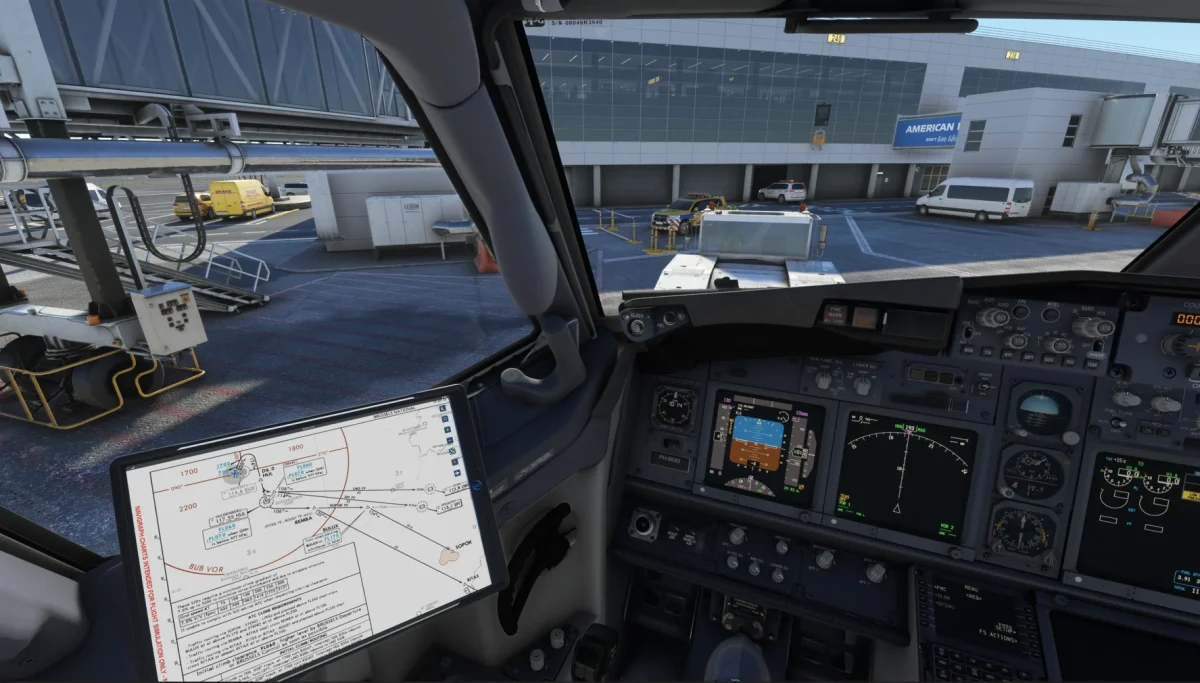
The initial release of the UFT is particularly focused on delivering some key tools high on the wish-list of simmers, but also aims to ensure stability and readiness for further growth. The core functionality of the UFT is outlined to include data entry through either an attached keyboard or an on-screen keyboard, selectable metric/imperial units, a day/night setting, and independent, fully functioning tablets for both the pilot and co-pilot. Each of these features is designed with the objective of fostering a seamless user experience.
An additional note from PMDG hints at the possibility of extending the UFT to external devices, although this is acknowledged as uncharted territory for PMDG’s technical implementation. The aspiration is there, but the timing for such an extension remains uncertain as the technical evaluation has not been conducted yet.
The inquiry regarding the inclusion of the UFT in the DC-6 was also addressed, albeit without a firm commitment. There is recognition of the demand among DC-6 pilots for this feature, but technical hurdles, primarily concerning the re-writing of the existing tablet functionality in the DC-6 to accommodate the UFT, pose significant challenges. The lack of free development time further compounds the issue, rendering the inclusion of the UFT in the DC-6 a speculative topic for the future.
PMDG also expresses the intent to ensure the UFT’s availability for Xbox users. However, the actual testing of airplane DLC on Xbox entails a process that is yet to be fully explored. Once the product clears the MS Marketplace intake process, designated beta testers will scrutinize the update, and PMDG is optimistic about realizing the full functionality of the UFT on Xbox, despite acknowledging that the Xbox environment could present unforeseen challenges.
As always, the full details as shared from Robert Randazzo himself are available on PMDG’s forums.
Finally, we also got the first good look into the UI of the tablet through the initial preview images that you can see here.
So, there you have it! PMDG’s tablet is finally launching in a few days and with a comprehensive, albeit perfectly expected feature set and the promise of significant future updates. It’s decidedly not as exciting as a new flying machine… but hey, that 777 is in very active development (if you look closely, the flight plan shown in the images above is for a 777!) and now that the UFT is out the door (or nearly there), PMDG should shift focus to showing how that Triple Seven is going along. Stay tuned for that in the coming weeks!
